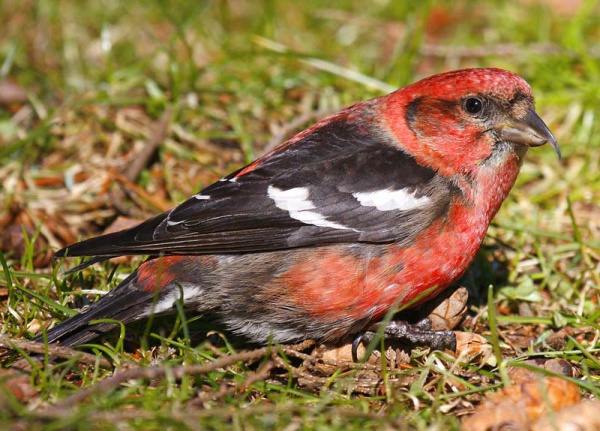Facts About Two-barred crossbill
The two-barred crossbill, referred to as the white-winged crossbill in North America, is a small bird belonging to the finch family, Fringillidae. There are two subspecies: the white-winged crossbill, found mostly in North America, and the two-barred crossbill, located in northeastern Europe and the Palearctic region. Its scientific name, "Loxia leucoptera" is derived from Ancient Greek, with "Loxia" meaning "crosswise" and "leucoptera" meaning "white-winged."
These birds thrive in coniferous forests across Alaska, Canada, the northernmost parts of the United States, and the Palearctic region, which includes northeastern Europe. They build their nests in conifers and typically lay between three and five eggs. While they are generally sedentary, they may migrate southward if their food supply becomes scarce. Outside of the breeding season, they often congregate in flocks, sometimes mingling with other crossbill species.
Crossbills are renowned for their distinctive bills, adapted for extracting seeds from conifer cones. The two-barred crossbill shows a preference for larch trees in Eurosiberia and North America, but they also feed on rowan berries and other types of cones. Males usually exhibit red or pinkish plumage, while females are typically green or yellow, though some variation can occur. The two-barred crossbill's notable white wing bars make it easily distinguishable from other crossbill species.
Additionally, there is a unique crossbill species called the Hispaniolan crossbill in the Caribbean, which is closely associated with the Hispaniolan pine tree. This bird differs from the two-barred crossbill in terms of plumage color, bill size, and geographic location.

 Dominican Republic
Dominican Republic